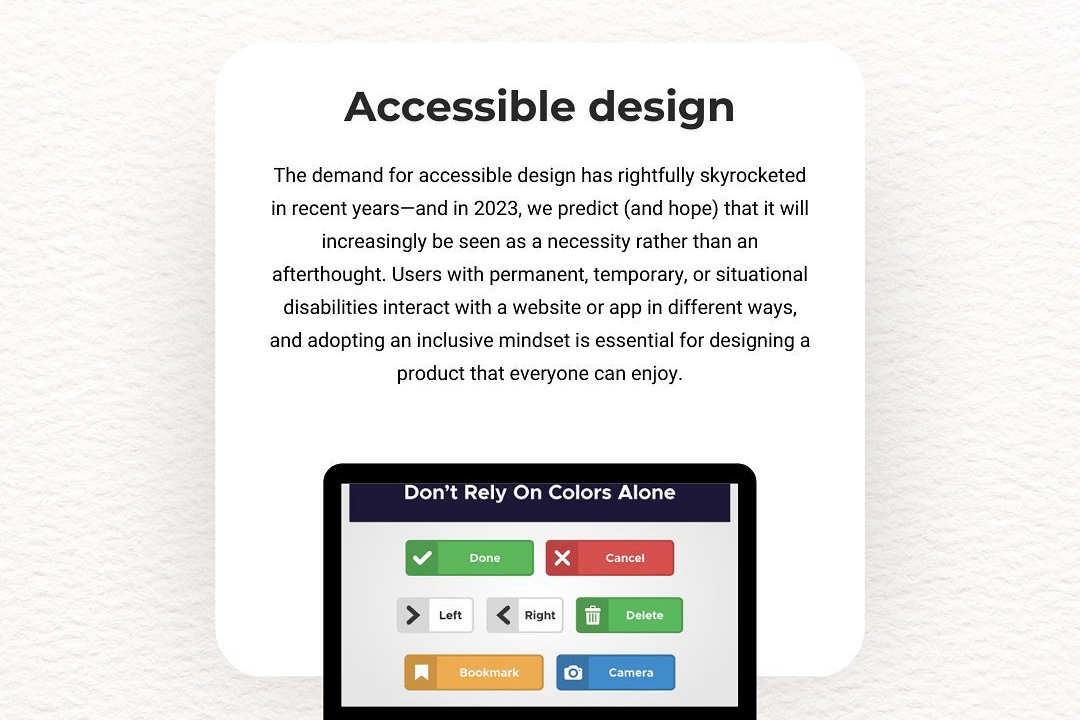Form Validation In Php Program Using Java Script
Form validation in PHP programs using JavaScript involves checking user input on the client side wit
Form Validation In Php Program Using Java Script
Form validation in PHP programs using JavaScript is essential for ensuring that user input is accurate and complete before submitting data to the server. By implementing validation on the client side with JavaScript, users receive instant feedback on any errors, such as missing or incorrectly formatted information, which enhances user experience and reduces frustration. Additionally, it helps prevent unnecessary server requests with invalid data, optimizing server performance. Although server-side PHP validation is crucial for security, combining it with JavaScript validation creates a more efficient, user-friendly, and secure web application process.
To Download Our Brochure: https://www.justacademy.co/download-brochure-for-free
Message us for more information: +91 9987184296
Form validation in PHP programs using JavaScript is essential for ensuring that user input is accurate and complete before submitting data to the server. By implementing validation on the client side with JavaScript, users receive instant feedback on any errors, such as missing or incorrectly formatted information, which enhances user experience and reduces frustration. Additionally, it helps prevent unnecessary server requests with invalid data, optimizing server performance. Although server side PHP validation is crucial for security, combining it with JavaScript validation creates a more efficient, user friendly, and secure web application process.
Course Overview
This course covers integrating JavaScript with PHP to implement effective form validation. Learn to enhance user experience by providing real-time feedback, prevent invalid data submission, and ensure data accuracy through client-side validation techniques. Gain practical skills in scripting, error handling, and combining JavaScript with PHP for secure, reliable web forms.
Course Description
This course teaches how to implement robust form validation in PHP using JavaScript. Learn to create real-time client-side validation, improve user experience, and ensure secure, accurate data submission through hands-on techniques combining JavaScript and PHP.
Key Features
1 - Comprehensive Tool Coverage: Provides hands-on training with a range of industry-standard testing tools, including Selenium, JIRA, LoadRunner, and TestRail.
2) Practical Exercises: Features real-world exercises and case studies to apply tools in various testing scenarios.
3) Interactive Learning: Includes interactive sessions with industry experts for personalized feedback and guidance.
4) Detailed Tutorials: Offers extensive tutorials and documentation on tool functionalities and best practices.
5) Advanced Techniques: Covers both fundamental and advanced techniques for using testing tools effectively.
6) Data Visualization: Integrates tools for visualizing test metrics and results, enhancing data interpretation and decision-making.
7) Tool Integration: Teaches how to integrate testing tools into the software development lifecycle for streamlined workflows.
8) Project-Based Learning: Focuses on project-based learning to build practical skills and create a portfolio of completed tasks.
9) Career Support: Provides resources and support for applying learned skills to real-world job scenarios, including resume building and interview preparation.
10) Up-to-Date Content: Ensures that course materials reflect the latest industry standards and tool updates.
Benefits of taking our course
Functional Tools
1 - JavaScript: JavaScript is the core scripting language used to implement client side form validation. It allows students to create real time validation scripts that can check user inputs instantly as they fill out forms, providing immediate feedback. In the course, students learn how to manipulate DOM elements, handle events like onClick and onChange, and write validation functions that ensure data accuracy before submission. Understanding JavaScript enhances interactive capabilities, enabling developers to improve user experience and reduce server load by catching errors early.
2) HTML5: HTML5 forms introduce native validation features such as built in input types (email, tel, url) and attributes (required, pattern). Students use HTML5 to design forms that leverage these features for basic validation. The course covers how to combine HTML5 validation with JavaScript for more complex checks, ensuring forms are accessible, semantic, and easier to maintain. HTML5 also plays a role in setting the structure and layout of forms, making the validation process more efficient.
3) Bootstrap Framework: Bootstrap provides pre designed CSS components and responsive grid systems for building visually appealing forms. Integrating Bootstrap simplifies the process of designing user friendly interfaces that are mobile responsive and consistent across browsers. In the course, students learn to combine Bootstrap’s classes with JavaScript validation scripts to create professional looking forms with real time validation indicators, tooltips, and alert messages.
4) PHP (Hypertext Preprocessor): PHP is the server side scripting language that complements client side validation by processing form data securely on the server. Students are taught how to validate form inputs using PHP to prevent malicious data and ensure data integrity when forms are submitted. This backend validation acts as a failsafe, catching any errors that client side JavaScript might miss, and helps in storing validated data into databases or processing payments.
5) Text Editors/IDEs: Tools like Visual Studio Code, Sublime Text, or PHPStorm serve as the main development environments where students write, test, and debug their validation scripts. These editors offer syntax highlighting, code suggestions, and debugging tools that streamline the development process. The course emphasizes the importance of using proper IDE features to write clean, efficient, and error free code, making the validation logic robust and maintainable.
6) Browser Developer Tools: Modern browsers like Chrome, Firefox, and Edge come equipped with developer tools that allow students to test and troubleshoot their JavaScript validation scripts in real time. They can inspect elements, monitor console logs for errors, and simulate different device views. Teaching students to effectively utilize these tools enhances their ability to debug issues quickly, optimize validation scripts for different browsers, and ensure consistent user experience.
7) Version Control Systems (Git): Git enables students to manage their code collaboratively and keep track of changes over time. It promotes best practices in software development by helping students revert to previous versions of their validation scripts if needed, branch out to experiment with new validation techniques, and collaborate efficiently with peers. The course introduces Git commands and workflows essential for maintaining clean, organized, and collaborative codebases.
8) Validation Libraries and Plugins: The course introduces various JavaScript validation libraries such as jQuery Validation Plugin, which simplifies the process of creating complex validation rules. These libraries provide pre built functions and customizable options, enabling students to implement features like password strength checks, matching fields, and asynchronous validations easily. Learning to leverage libraries enhances productivity and adds advanced validation capabilities without reinventing the wheel.
9) AJAX (Asynchronous JavaScript and XML): AJAX techniques are used to perform server side validation dynamically without reloading the page. Students learn how to send background requests to validate data such as usernames or email addresses in real time, improving interaction fluidity. This tool is vital for creating seamless user experiences and validates data against existing records or server constraints efficiently.
10) Database Management Systems (MySQL, PostgreSQL): When validating data that must be unique or checked against existing records, students use databases to store and retrieve information securely. The course covers establishing database connections, writing queries, and integrating database checks within validation scripts. This backend support helps ensure data consistency and enforces business rules during form submission.
11 - JSON (JavaScript Object Notation): JSON is employed for data interchange between client and server during asynchronous validation checks. Students learn how to format validation data in JSON, send it via AJAX requests, and interpret server responses. This efficient data format simplifies communication, making real time validation more effective and faster.
12) Web Development Frameworks: Frameworks like Laravel or CodeIgniter are introduced to demonstrate structured approaches for validating forms within larger applications. These frameworks provide built in validation modules and security features, helping students understand best practices for integrating validation in scalable projects. This knowledge prepares students for professional web development environments.
13) CSS (Cascading Style Sheets): CSS is used to style validation messages, error prompts, and visual validation indicators, making the form more user friendly. In the course, students learn to design clear, accessible, and visually consistent validation feedback using CSS alongside JavaScript, enhancing overall usability and aesthetic appeal.
14) Security Tools: To address vulnerabilities like SQL injection and cross site scripting (XSS), students explore security practices and tools that protect validation processes. This includes sanitizing inputs, encoding outputs, and using input validation libraries designed for security. Integrating these tools ensures that forms are not only user friendly but secure against common web threats.
15) Testing Tools: Automated testing tools like Selenium or Jest are used to validate the reliability of validation scripts across different browsers and scenarios. Students are guided on writing test cases to verify that validation rules work correctly, handle edge cases, and do not introduce regressions. Proper testing is essential for deploying robust, error free forms in production environments.
16) Accessibility Tools (ARIA): Incorporating ARIA (Accessible Rich Internet Applications) attributes ensures that validation messages and form controls are accessible to users with disabilities. Students learn to implement accessible validation feedback so that screen readers and assistive technologies can interpret errors and instructions correctly, promoting inclusive web design.
17) Responsive Design Principles: Ensuring that validation messages and form layouts adapt seamlessly to various devices and screen sizes is crucial. The course covers responsive design techniques that make validation interfaces user friendly on desktops, tablets, and smartphones, enhancing overall user engagement and reducing bounce rates.
18) Custom Validation Functions: Beyond built in validation features, students learn how to create custom validation functions to handle complex or unique validation scenarios specific to their applications. This includes writing reusable validation logic, which improves code modularity and maintainability.
19) Progressive Enhancement: The course emphasizes progressive enhancement strategies where basic validation is implemented first, with advanced client side validation added for browsers that support it. This approach guarantees core functionality across all users, regardless of browser capabilities, while enhancing user experience where possible.
20) Error Handling and User Guidance: Effective validation involves clear, concise error messages and prompts. Students explore techniques for designing user friendly feedback, providing hints, and guiding users to correct inputs efficiently, which reduces frustration and improves form completion rates.
21 - Data Sanitization Techniques: Students learn methods to clean and sanitize user inputs both on client and server sides to prevent scripting attacks, SQL injections, and data corruption. Proper sanitization enhances security and data integrity within validation processes.
22) Localization and Internationalization: For global applications, validation messages and prompts are designed to support multiple languages and cultural formats. The course guides students in developing multilingual validation scripts, ensuring accessibility across diverse user bases.
23) Automated Form Generation Tools: Exploring tools that automatically generate form validations based on schema definitions or specified rules accelerates development workflows. Students learn to leverage these tools for faster prototyping and consistent validation standards.
24) Performance Optimization: Efficient validation scripts are crucial for high performance applications. The course covers techniques to optimize validation logic for speed, reduce unnecessary computations, and minimize server load, ensuring scalable and responsive forms.
25) Cross Browser Compatibility Testing: Students utilize tools and practices to verify that validation scripts work uniformly across different browsers and versions. Ensuring compatibility prevents user experience issues and maintains professional standards.
26) Audit and Logging Mechanisms: Implementing mechanisms to log validation errors and user attempts provides insights into common issues and helps monitor form usage. This data supports iterative improvements and security audits.
27) Deployment and Monitoring: Students are introduced to best practices for deploying validated forms in production environments, including monitoring form activity, checking for validation breaches, and updating scripts as needed for evolving requirements.
28) Integration with Third Party Authentication: Advanced validation includes integrating forms with OAuth, LDAP, or social logins. These integrations require validation of token responses and user data, adding layers of complexity to validation strategies.
29) Data Privacy Compliance: The course emphasizes adherence to data privacy laws like GDPR and CCPA, guiding students on how to validate and handle personal data securely, ensuring legal compliance and building trust with users.
30) Continuous Learning and Industry Trends: Keeping up with the latest validation techniques, frameworks, and security threats is essential. The course encourages students to stay informed through industry publications, webinars, and community forums for ongoing professional development.
Browse our course links : https://www.justacademy.co/all-courses
To Join our FREE DEMO Session:
This information is sourced from JustAcademy
Contact Info:
Roshan Chaturvedi
Message us on Whatsapp: +91 9987184296
Email id: info@justacademy.co












